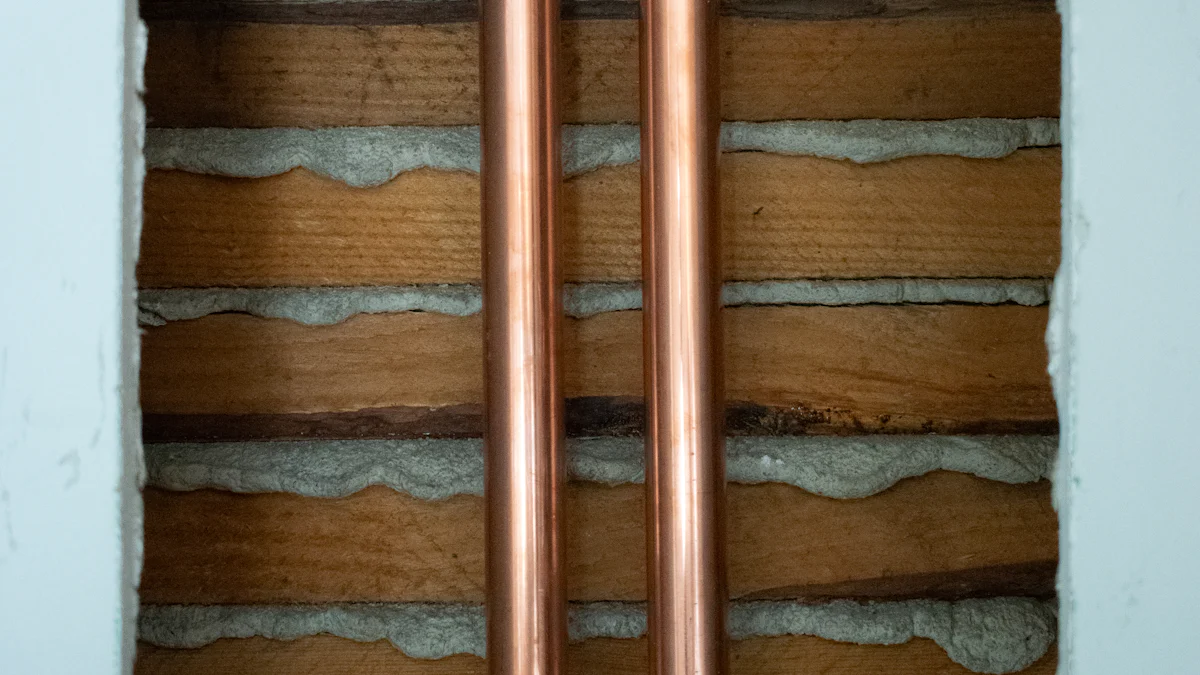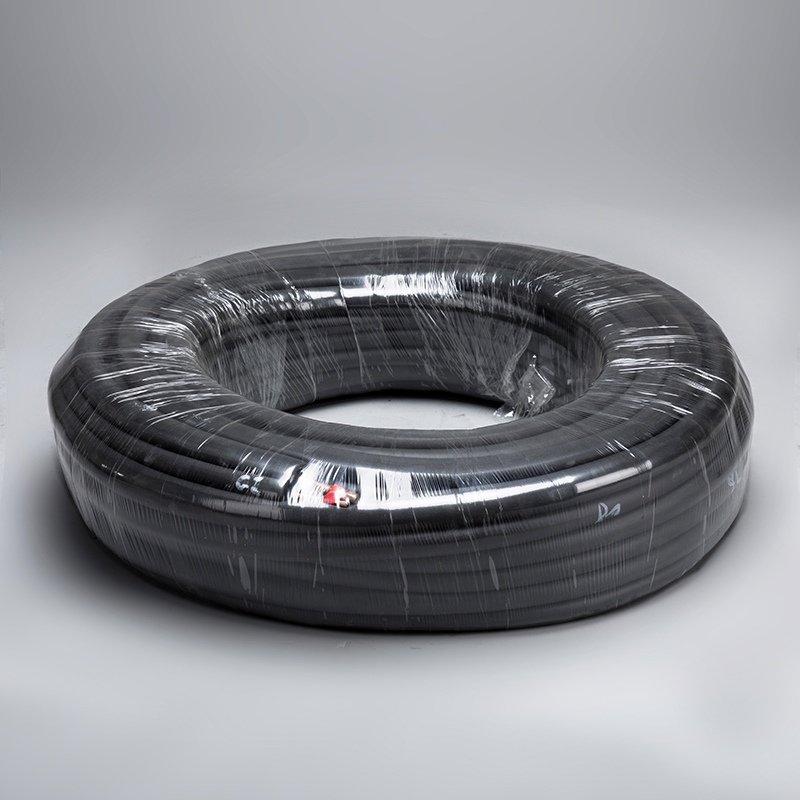Copper Pipe vs Tube: Debunking Common Myths

Understanding the distinctions between copper pipes and tubes is crucial in various industries. Many harbor misconceptions about these components, leading to confusion in their applications. This blog aims to debunk common myths surrounding copper piping and tubing, providing clarity on their unique characteristics and uses, and answering the question: Is copper a pipe or tube?
Understanding Copper Pipes and Tubes

When considering the distinction between copper pipes and tubes, it is essential to understand their unique characteristics and applications. Is copper a pipe or tube? Let's delve into the definitions, differences, and where they are commonly utilized.
Definitions and Differences
Copper pipes are typically identified by their nominal pipe size or inner diameter, while copper tubing is generally referred to as 'pipe' when rigid or 'hard.' The primary difference lies in their flexibility; pipes are more rigid, suitable for fixed installations, while tubes are more versatile due to their malleability. In residential settings, copper pipes are often used for water supply lines, whereas tubes find application in HVAC systems for refrigerant lines.
Applications in Residential and Commercial Settings
In residential construction, copper pipes play a vital role in plumbing systems due to their corrosion resistance and durability. They are commonly used for water distribution within buildings and homes. On the other hand, copper tubes are prevalent in commercial settings for various applications such as air conditioning systems, refrigeration units, and medical gas distribution.
Types of Copper Pipes
Type K: Known for its thick walls, Type K copper piping is ideal for underground service lines.
Type L: With medium thickness walls, Type L pipes are versatile and commonly used in residential construction.
Type M: Featuring thin walls, Type M pipes are cost-effective solutions for low to medium pressure applications.
Characteristics and Uses
Type K: Suitable for high-pressure applications like underground service lines.
Type L: Versatile choice with moderate strength for general use.
Type M: Cost-effective option primarily used in residential construction.
Types of Copper Tubes
Soft vs. Hard Copper Tubes
Soft copper tubes offer flexibility and ease of installation but may not withstand high pressures like hard tubes can. Hard copper tubes provide structural integrity ideal for fixed installations requiring durability.
Joining Methods for Copper Tubes
Copper tubing can be joined using methods such as solder/sweat connections or compression fittings. These methods ensure secure connections that maintain the integrity of the system over time.
Common Myths Debunked
Myth 1: Copper pipes and tubes are the same
Explanation and facts
Many individuals mistakenly believe that copper pipes and tubes are interchangeable components in plumbing systems. However, the distinction between these two is crucial for understanding their unique applications. While both are made of copper, they serve distinct purposes due to their structural differences.
Myth 2: Copper pipes are outdated
Modern uses and advantages
Contrary to popular belief, copper pipes continue to be a preferred choice in various industries due to their exceptional properties. The evolution of technology has only enhanced the versatility of copper piping, making it a reliable option for modern construction projects. Its durability and longevity have stood the test of time, proving that it remains a valuable material in today's market.
Myth 3: Copper tubes are not durable
Durability and longevity of copper tubes
One common misconception is that copper tubes lack durability compared to other materials. In reality, copper's innate strength and resistance to corrosion make it an ideal choice for long-term use. Whether in residential or commercial settings, copper tubes offer unmatched reliability that ensures the integrity of plumbing systems over extended periods.
Myth 4: Copper piping is too expensive
Cost analysis and long-term benefits
Investing in copper piping may initially seem costly, but the long-term advantages far outweigh the upfront expenses. The durability and reliability of copper make it a cost-effective choice for plumbing systems. Here are some key points to consider when evaluating the overall value of copper piping:
Longevity: Copper's resistance to corrosion ensures a prolonged lifespan, reducing the need for frequent replacements.
Low Maintenance: With minimal maintenance requirements, copper piping offers savings in upkeep costs over time.
Energy Efficiency: Copper's high heat transfer capabilities contribute to energy efficiency, potentially lowering utility bills.
Resale Value: Properties with copper plumbing often have higher resale values due to the perceived quality and durability of copper systems.
Choosing the Right One

Factors to Consider
Application-specific Needs
Evaluate the specific requirements of your project to determine whether copper pipes or tubes are more suitable. Consider factors such as the intended application, environmental conditions, and required durability.
Identify the unique characteristics of each component to align with the demands of your project effectively. Understanding how copper pipes and tubes differ in flexibility, strength, and installation methods can guide your decision-making process.
Consult with industry experts or professionals to gain insights into which option best meets your application-specific needs. Their expertise can provide valuable guidance in selecting the most appropriate material for your project.
Budget and Long-term Benefits
Conduct a comprehensive cost analysis comparing the initial investment and long-term benefits of utilizing copper pipes versus tubes. Consider factors such as material costs, installation expenses, maintenance requirements, and potential savings over time.
Evaluate the overall value proposition of each option by weighing their durability, reliability, and performance against the associated costs. While upfront expenses may vary between copper pipes and tubes, assessing their long-term benefits is crucial for making an informed decision.
Factor in potential energy savings, maintenance efficiencies, and resale value when considering the budget implications of choosing between copper pipes and tubes. A thorough assessment of these aspects can help you determine the most cost-effective solution for your project.
In summary, distinguishing between copper pipes and tubes is essential for informed decision-making in various industries.
Understanding the unique characteristics and applications of each component is crucial for successful project outcomes.
It is imperative to recognize the importance of clarity in differentiating between copper pipes and tubes to avoid misconceptions.
Moving forward, professionals should prioritize selecting the appropriate material based on specific project requirements.
By acknowledging these distinctions, individuals can optimize their choices and ensure efficient and effective installations.
See Also
Insights on Why Copper Pipes Outperform PVC Environmentally
Exploring the Durability of Copper Pipes Buried Underground
Prevent These 5 Common Mistakes When Soldering Copper Pipes


